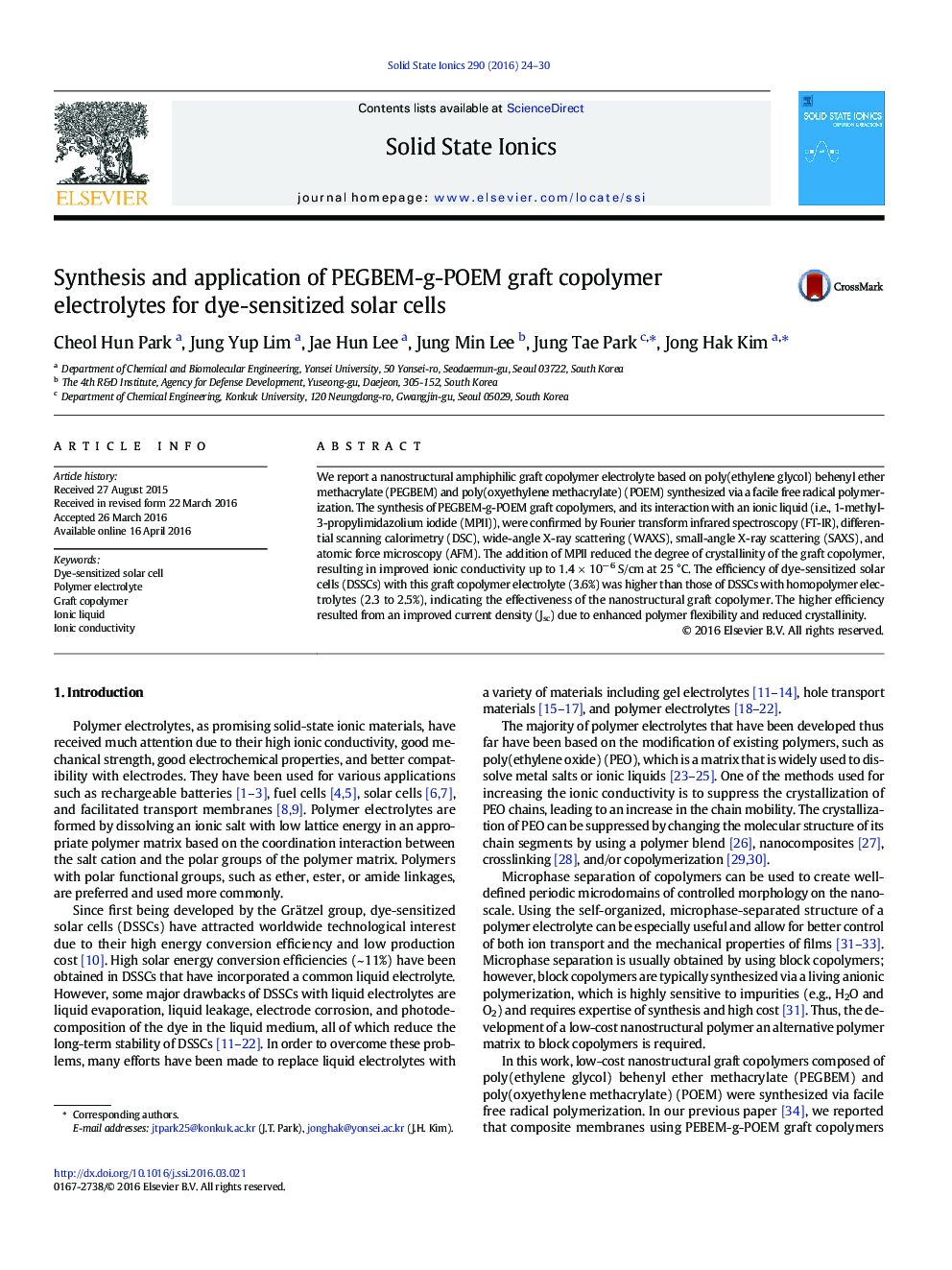| Article ID | Journal | Published Year | Pages | File Type |
|---|---|---|---|---|
| 1296101 | Solid State Ionics | 2016 | 7 Pages |
•PEGBEM–POEM comb copolymer is synthesized via facile free radical polymerization.•Addition of MPII reduces the degree of crystallinity and increases chain flexibility.•Distinct structural amphiphilic properties are observed by AFM and SAXS analysis.•Efficiencies of graft copolymer-based DSSCs are higher than homopolymer-based cells.•This improved performance mostly results from the increased ionic conductivity.
We report a nanostructural amphiphilic graft copolymer electrolyte based on poly(ethylene glycol) behenyl ether methacrylate (PEGBEM) and poly(oxyethylene methacrylate) (POEM) synthesized via a facile free radical polymerization. The synthesis of PEGBEM-g-POEM graft copolymers, and its interaction with an ionic liquid (i.e., 1-methyl-3-propylimidazolium iodide (MPII)), were confirmed by Fourier transform infrared spectroscopy (FT-IR), differential scanning calorimetry (DSC), wide-angle X-ray scattering (WAXS), small-angle X-ray scattering (SAXS), and atomic force microscopy (AFM). The addition of MPII reduced the degree of crystallinity of the graft copolymer, resulting in improved ionic conductivity up to 1.4 × 10−6 S/cm at 25 °C. The efficiency of dye-sensitized solar cells (DSSCs) with this graft copolymer electrolyte (3.6%) was higher than those of DSSCs with homopolymer electrolytes (2.3 to 2.5%), indicating the effectiveness of the nanostructural graft copolymer. The higher efficiency resulted from an improved current density (Jsc) due to enhanced polymer flexibility and reduced crystallinity.
